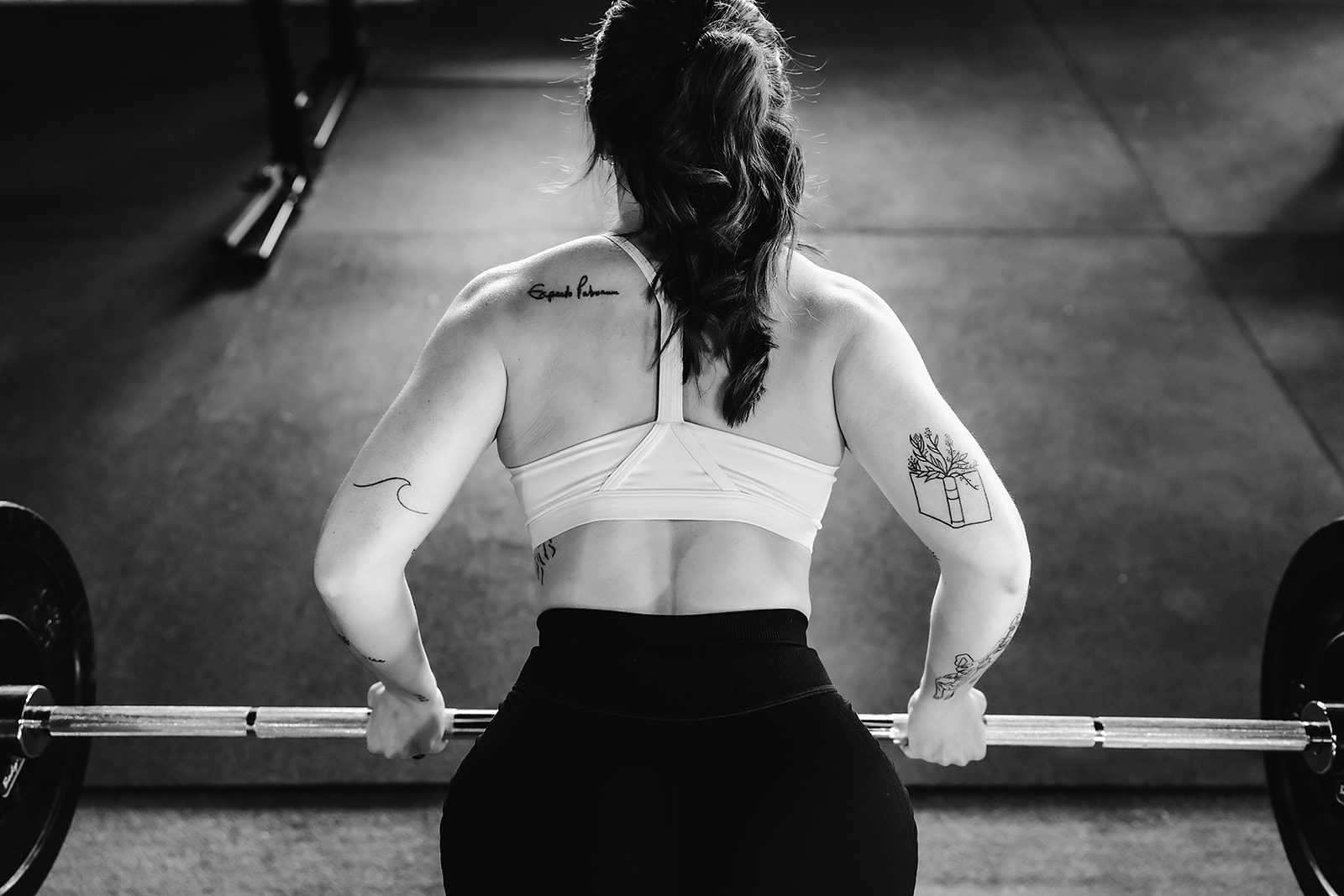On some level, you listen to your body and the signals it gives you to regulate your day-to-day functioning. However, constant connection with your body’s needs takes a lifetime to develop. This article will teach you what listening to your body truly means, and how to incorporate deepening your listening skills into your daily habits.
Watch the live podcast recording here:
Why is Listening to Your Body Important?
Your body is always communicating with you in some way through hunger signals, cravings, pain, pleasure, emotions, and feeling tired. Knowing your body’s signals allows you to be its steward, giving it exactly what it needs, which leads to living a healthy and happy life.
If you’re like most people in Western culture, you might have never been taught how to listen to it. We live in a world that’s constantly trying to drown out those signals through distraction, overstimulation, or just plain ignoring what we feel because “we don’t have time.” It’s not that your body isn’t speaking, it’s that you’ve forgotten how to hear it. And re-learning that skill takes effort and presence. Learning how to tune into your body requires discipline. It’s constant practice.
If you’re:
- Shoveling down overly processed foods
- Have disordered eating habits
- Drowning your system in toxins like alcohol
- Sabotaging your sleep every night
- Overtraining
- Treating movement like a punishment instead of a gift
You’re not honoring your body. Instead you’re engaged in habits that either confuse your body’s signals, mute what your body is trying to tell you, or override them. If anything mentioned above applies to you, you may experience times when you feel like your body is screaming for help, but lack the proper tools or baseline to communicate.
How to Listen to Your Body
When you make the shift to listening to your body instead of just living in it, it requires you to show up in earnest through discipline in creating a solid baseline from which to listen. How you get there is through setting the baseline of healthy habits.
Intuitive Eating
A huge aspect of this is eating a healthy diet. The end goal is to know how to intuitively eat and incorporating it into your life, which may take some upfront work of understanding how to track macros, understanding how much protein you need, and providing your body nourishment though a mostly whole foods diet that is rich in fiber through a high intake of vegetables and fruit. Once those systems are in place, you can start to learn your body’s internal cues around eating and begin to eat more intuitively.
Tune In to Your Digestion
No matter where you are in this process you can always ask yourself how you feel after eating certain foods and meals. Write down a list of your favorite foods (as in delicious and enjoyable to eat) that also give you the best energy or feeling satiety. For example, adding sweet potatoes to your meal offers a nutrient dense carb source that is also sweet. Tune into your digestion after you eat certain meals. Do you feel bloated after eating a certain food even though it’s a healthy food? What else did you eat it with? By doing this, you’re talking to your body and asking it, aside from taste, how it would rank the meal you just ate.
Cravings
It’s important to understand the difference between hunger and cravings. To understand whether you’re experiencing a craving or hunger, ask yourself if you would eat an entire meal or if you’re just wanting a particular food. Cravings usually stem from boredom (maybe even in life as a whole, not just in the moment). When you feel a craving come in, notice what types of food you generally gravitate towards.
Menstrual Cycle
Having an awareness of the timing and hormonal shifts throughout your menstrual cycle is a great awareness to have. Try tracking the first day of your cycle on your phone calendar, so you know the average amount of days your cycle is. Then, pay attention to your hormone fluctuations and take notes. Were you a monster a week before your period and didn’t know why? Write it down. Notice how your appetite and energy level fluctuates during your cycle as well. Women, on average, tend to eat 10-15% more calories in the week leading up to bleeding. In general, women feel the best and can train the hardest the first couple of weeks after their cycle (during the follicular phase). Notice these shifts in your body throughout the month, so you can understand its shifting needs.
Sleep Check In
Getting a good night’s sleep is also a crucial element for creating a baseline from which to listen to your body. This is because getting enough sleep helps balance stress and cortisol levels, and not to mention, moving through the day tired means you’re already pushing through your body’s signals that are telling you it needs more sleep. Not sleeping enough can lead to fatigue, overeating, and over-caffeinating, which blur the signals your body is trying to tell you. One of the easiest ways to create good habits around sleep is by going to bed and waking up at the same time every day. However, not everyone who works odd hours or has kids has this privilege. However, some sort of routine and discipline can at the very least increases the amount of sleep you get.
Recovery
Next on the list is checking in with your recovery. First thing in the morning, ask yourself: “How am I feeling today?” Feel for physical cues: are you tired, have energy, feel soreness, or maybe you’re hungry? After you wake up and move a little, ask yourself again, “how am I feeling?” Throughout the day, feel for emotional cues like stress, burnout, and dips in motivation.
Sometimes it’s hard to know if your body is fatigued because it needs rest or feeling tired because it actually needs to move. The best way to track the difference is to go for a walk, dance to your favorite song, or do something active. How do you feel after? If you still feel tired and depleted, you need to focus on giving your body rest because your body is fatigued. This could be caused by poor sleep, high stress, chronic cardio, or heavy training intensity and volume.
Knowing whether your body is sore or in pain can help you make smarter training decisions. Soreness, or delayed onset muscle soreness (DOMS), usually shows up 12 to 48 hours after a workout and feels like a dull ache, stiffness, or tenderness in the muscles you trained. If you’re feeling mild to moderate soreness and it eases up as you warm up, it’s usually safe to continue training. Generally, feeling sore or muscle recovery is something that can be addressed through stretching, active recovery, taking a bath or an ice bath, etc. Pain, on the other hand, is sharper, more localized, and can feel stabbing, burning, or persistently achy. It often affects joints or tendons rather than muscle tissue and typically worsens with movement. If something feels off, especially if it changes how you move or doesn’t improve with rest, it’s a sign to modify, rest, or consult a coach or provider.
The Power of Learning to Listen to Your Body
The hardest part of truly beginning to listen to your body is being aware of your body and what it’s telling you without judgement or trying to overthink it. This is a skill of presence that you’ll slowly develop over time.
Ways to strengthen your relationship to your body:
- Daily check-ins: Check in with your body first thing in the morning and mid-day when your energy starts to drop.
- Daily breathwork: Taking just 5 minutes to do any breathwork helps with resetting the nervous system and clearing the mind. Next time you reach for your phone, consider sitting and taking deep breaths instead.
- Giving Gratitude: No matter the aches, pain, conditions etc. your body has, it HAS gotten you here. And chances are, you’ve had countless experiences in your body that were incredible. Place your hands over your heart and just give gratitude for your body getting you here, to this moment. Full your heart with the rich experiences that living in a body has allowed you to have.
- Body scans: take a moment to scan your body from your feet to the crown of your head and notice (don’t think just notice) how it feels.
- Unplugged time: Give yourself some time in the morning without reaching for your phone, go on a walk without your headphones, without your phone, take 10 minutes in a separate room than your computer or phone and just BE for a second. It’s crucial that we get time without technology and distractions away to truly feel our human experience.
- Journaling: Take any time you have available to write stream-of-consciousness. Track your physical and emotional feelings and see if any correlate.
Remember, building a relationship with your body is a lifelong skill that takes discipline and time. In the meantime, be kind to your body and try your hardest not to judge your body for the way it looks, feels, and functions. The truth is, the body is always working to the best of its ability at every single moment. When you can start to recognize that, the body turns from something that needs to be controlled to something that is worthy of your love and care.
Listening to your body overtime will help you grow your intuition, take good care of yourself, strengthen your relationship with yourself, improve your self-esteem, and help you to feel more empowered.
Want to learn more about listening to your body? Listen to episode 234 of the Stronger Than Your Boyfriend Podcast: Listening to your body



